Introduction: QUANTUM BIOLOGY
M. Jérémie Léonard
IPCMS, Strasbourg
Durée :
The Physics of Living Matter - European Summer School
Du au
Amphi WEISS, Strasbourg
Laboratory of Cell Physics
The European Summer School of the University of Strasbourg is a prestigious one-week meeting of students from all over Europe. They present their research projects and attend lectures on some of the most recent topics in physics presented by internationally known scientists. The 2016 edition of the school is organized by the faculty of physics and engineering of the University of Strasbourg together with the Collaborative Research Centre 1027 of the University of the Saarland.
Cell Physics has emerged as a new branch of Physics during the last decade. Quantitative experiments that address the cellular dynamics can nowadays be performed directly in the living cell, tissue or organism. This enables the investigation of biological systems using a typical physicist’s approach, including a tight interaction between models and experiments. Because living matter exhibits new, complex out-of-equilibrium properties, cell physics has received a lot of interest from theorists in terms of model building.
New aspects have been developed in biology, concerning topics such as collective effects, chirality, quantum biology, as well as the origin of life. We now witness the appearance of a new generation of scientists that are trained in Physics as well as in Biology, who know about theory as much as about experimental work. The recently created Cell Physics Master in Strasbourg University is based on this scientific direction. The scope of the school covers recent developments in cell physics with a central emphasis on their biological relevance.
Thème(s) : Physique Sciences
Sciences fondamentales
Producteur : Université de Strasbourg
Réalisateur : Université de Strasbourg
INNOVATIVE METHODS IN OPTICS FOR BIOLOGY
Quantitative Fluorescence Microscopy Techniques: From living cells to single molecules
M. Pascal Didier
Laboratoire de Biophotonique et Pharmacologie, Strasbourg
Fluorescence microscopy has become an invaluable tool to study protein dynamics in living organisms. The emergence of fluorescent proteins (FPs) has opened the way to the visualization in space and time intracellular proteins thanks to a non-invasive one-to-one tagging obtained by fusing FP with proteins of interest by recombinant DNA techniques. Moreover, a large palette of FP mutants, which display emission spectra all over the visible range as well as improved fluorescence quantum yield and sensitivity to different chemical environments, have been obtained by molecular engineering. Trough these developments, quantitative imaging by means of multicolour labelling and advanced fluorescence measurements is now currently used to quantify biomolecular interactions in living cells with a spatial resolution far below the diffraction limit. In this lecture, I will present the different approaches developed in the lab to monitor biomolecular interaction in living cells. In particular, I will show how Fluorescence Lifetime Imaging Microscopy (FLIM) and Fluorescence Correlation Spectroscopy (FCS) can be used to decipher protein-protein interactions. However, these techniques, performed at the ensemble level, do not allow measuring the kinetic constants of a biomolecular reaction. To overcome this limitation, we developed a widefield microscope having single molecule sensitivity. With the help of Förtser Resonance Energy Transfer (FRET) I will show that it is possible to follow, over time, the interaction between a single protein and a single oligonucleotide allowing to obtain information about the reaction kinetic. In addition, the ability to detect individual fluorophores can also be used in a cellular context to visualize cellular compartments with a spatial resolution of 30 nm overcoming thus the resolution of conventional optical microscopy.
Optical microscopy and spectroscopy of single molecules and single plasmonic gold nanoparticles
M. Michel Orrit
Leiden Institute of Physics
Optical signals provide unique insights into the dynamics of nano-objects and their surroundings [1]. I shall present some of our experiments of the last few years. i) We study single gold nanoparticles by photothermal and pump-probe microscopy. We recently studied the dynamics of vapor nanobubbles created in the liquid surrounding a single immobilized gold nanosphere [2]. ii) Photothermal microscopy opens the study of non-fluorescent absorbers, down to single-molecule sensitivity [3]. Combining this contrast with photoluminescence, we can measure the luminescence quantum yield on a single-particle basis. The high signal-to-noise ratio of this technique enables uses of individual gold nanoparticles for local plasmonic and chemical probing [4]. iii) Gold nanorods generate strong field enhancements near their tips. Matching the rods' plasmon to a dye's spectra, we observe enhancements in excess of thousandfold for the fluorescence of single Crystal Violet molecules [5]. This method generalizes single-molecule fluorescence to a broad range of weak emitters.
[1] F. Kulzer et al., Angew. Chem. Int. Ed., 49 (2010) 854. [2] L. Hou et al., New J. Phys. 17 (2015) 013050 [3] A. Gaiduk et al. Science 330 (2010) 353 [4] P. Zijlstra et al., Nature Nanotech. 7 (2012) 379. [5] H. Yuan et al., Angew. Chem. Int. Ed. 52 (2013) 1217-1221
COLLECTIVE EFFECTS
Intro: COLLECTIVE EFFECTS IN BIOLOGY
M. Albert Johner
ICS, Strasbourg
Introduction for the lecture by Guy Theraulaz.
The introductory lecture focuses on how coordinated motion emerges. It starts out from a description of various systems like collections of motile microorganisms, animal flocks, or man-made imitations, spanning all sizes from microscopic to macroscopic. We then review recent work aiming at a unifying classification of the systems in terms of symmetries and conservation laws. Assemblies with high communication skills like ant and termite colonies will not be addressed in this introduction.
M.C. Marchetti et al., Reviews of Modern Physics, vol. 85, (2013). Antoine Bricart et al., Nature 503, p.95 (2013). Khanh-Dang Nguyen Thu Lam et al., New J. Phys. 17 (2015) 113056
QUANTUM BIOLOGY
Electron transfer processes from the molecular to the cellular length scales
M. Spiros Skourtis
University of Cyprus, Senior Fellow U. Freiburg
Biological electron transfer chains are central to several cellular and extra-cellular processes that include bioenergetics, signalling and the creation and control of disease. Understanding biological electron transfer mechanisms from the single molecule (quantum mechanical) to the cellular (kinetic network) length scales is a grand project. I give a review of the current status of the field and discuss open questions and future challenges.
References
[1] S. S. Skourtis Protein electron transfer in Quantum Effects in Biology Cambridge University Press, M. Mohseni, Y. Omar, G. Engel, and M.B. Plenio, editors, July 2014, isbn: 9781107010802
[2] S. S. Skourtis Probing electron transfer mechanism from the molecular to the cellular length scales Special issue on "Peptide-mediated electron and energy transport" Biopolymers (Peptide Science) 100, 82-92 (2012)

